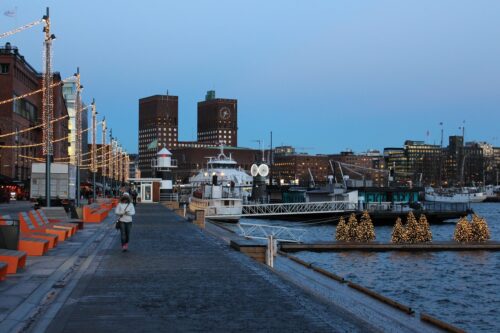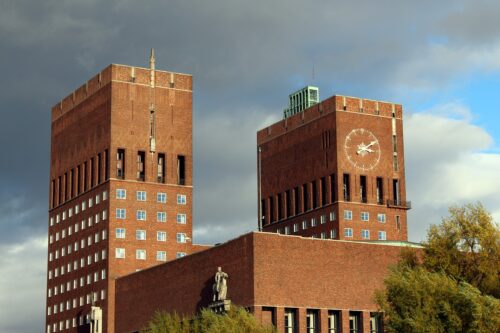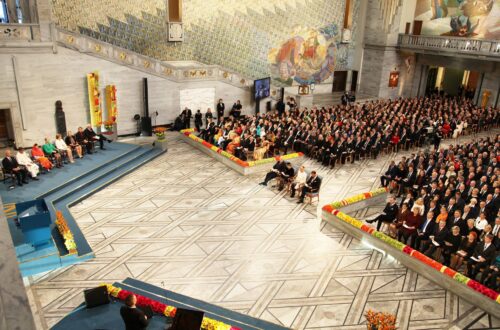Rådhuset
Leaving Kvadraturen behind and moving westwards towards the harbor it’s easy to discern the tall towers of the emblematic Rådhuset, the City Hall of Oslo. The third-in-line City Hall in the history of Oslo was inaugurated in 1950 in what was then a poor & squalid neighborhood of the city known as Vika, which started to be reshaped in the late 1920s to receive the city’s new administrative center.


Although the construction works for the building started at the end of 1931, the outbreak of WW2 in 1940 halted its completion until 1947 when the works finally resumed. The whole project was inspired by Stockholm’s City Hall with the two tall towers and the enormous astronomical clock echoing the design of traditional northern-European town halls in general. Its red brick facade is decorated with historical themes.
Its interior is dominated by the spectacular main hall, its impressive marble staircases, the murals by Henrik Sørensen inspired by Nordic social democratic themes, and the paintings of the Banqueting Hall, including one by Edward Munch.


Of course, this building is mainly famous for its annual Nobel Peace Prize ceremony held every 10th of December (the anniversary of Alfred Nobel’s death) on the far end of the hall. The fantastic views from the windows of the first floor as well as the different exhibitions that take place every year on its premises make this free-entrance attraction a very convenient stop. More



